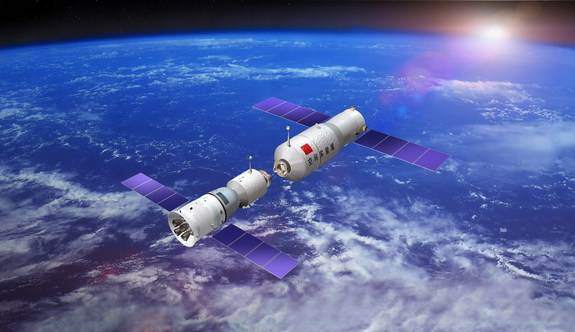China remains on track to launch an unmanned test module into orbit via its Long March II-F rocket sometime next week.
Dubbed Tiangong-1, or “Heavenly Palace 1,” the 8.5-ton module is seen as critical first step in helping Beijing achieve its goal of constructing a space station by 2020.

“Scientists will conduct final tests in the next few days before injecting propellants for the launch,” Cui Jijun, director of the Jiuquan Satellite Launch Center, said in a statement quoted by Xinhuanet.
According to Jijun, Tiangong-1 has been tapped to serve as “a target spacecraft” for rendezvous and docking experiments.
The module will also function as “a platform to test long-term unmanned and short-term manned operations,” as technical and medical experiments are expected to provide “crucial data” for future missions.
Indeed, an unmanned Shenzhou-VIII craft will be launched later this year to dock with Tiangong-1, while Shenzhou IX and Shenzhou X are scheduled to complete at least one manned docking in 2012.
Unsurprisingly, western analysts seemed to downplay the significance of China’s Tiangong-1. For example, Joan Johnson-Freese, an expert on China’s space program at the U.S. Naval War College on Rhode Island, told Reuters Tiangong 1 was primarily a technology test bed.
“Technically, it has been compared to where the U.S. was during the Gemini program [in the mid-1960s]… Tiangong is not going to immediately or directly provide China any military capabilities.”
Similarly, Morris Jones, a space analyst based in Sydney, emphasized that the “real test” of Tiangong won’t be its flight as a solo mission, but rather, when the module tries to dock with another spacecraft.
“Without rendezvous and docking, you really cannot run an advanced space program. You’re confined to launching small spacecraft that just operate by themselves,” he explained.
“The real story is that when they eventually get around to building a space station it will look nothing like Tiangong. It’s a test of a spacecraft that will one day be used as a cargo carrying vessel to a larger space station.”






